
17,498 miles / 28,161 Km by Motorbike
Morocco
I arrived in Africa in December 2011, by ferry from the South of Spain into Morocco. I had been given some advice to visit some of the villages in the north of the country, so I spent the first few days heading through the mountains, ending up in a city called Fes. Fes is an ancient city with a great medina fully of narrow winding streets and small shops selling souvenirs, spices, fruits, meats and all kinds of leather items. One of the best things to do there is see the old tannery from up on the roofs of the shops. After spending a few days in Fes, I headed to Rabat to meet up with another guy called Tony who was also planning to travel through Africa.
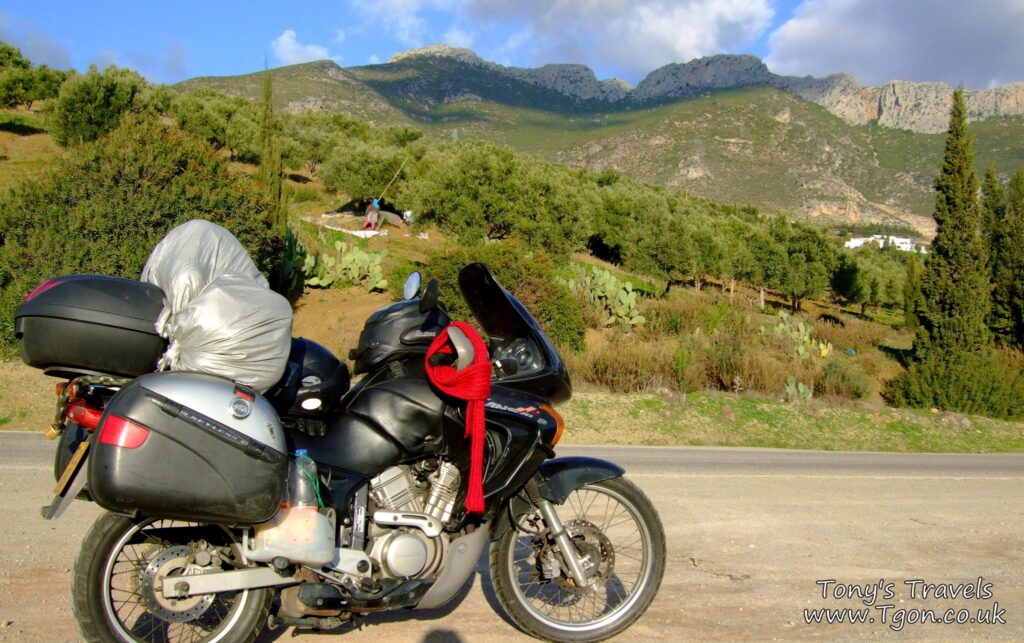
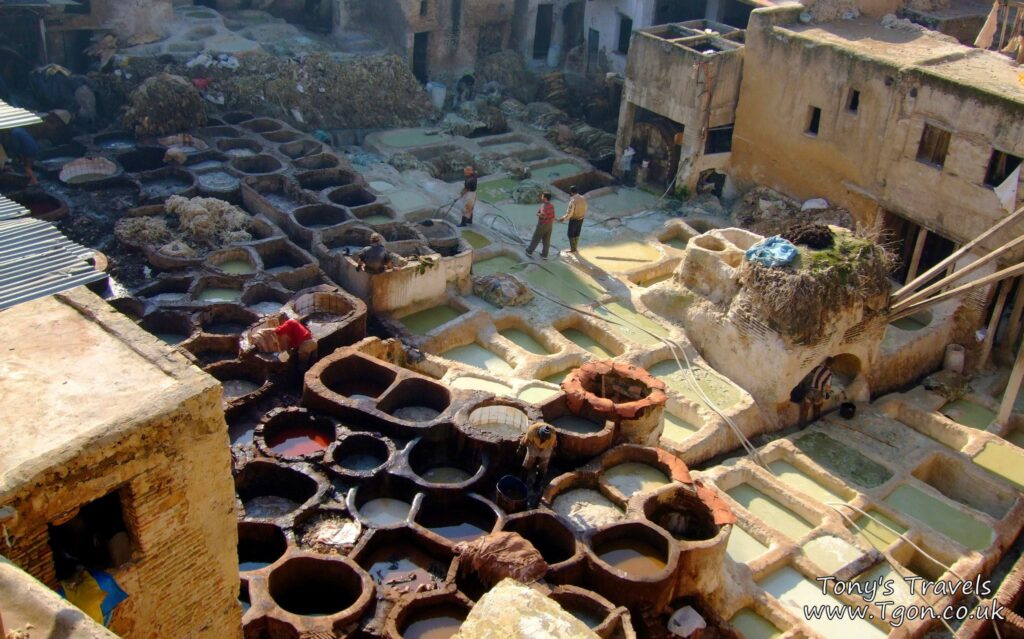
I met Tony in Rabat and applied for my visa to go into Mauritania, but as it was a Friday I had to wait until Monday to collect my passport. So I headed inland with Tony to visit some waterfalls for the weekend at Cascade d’Ouzoud. When I first met Tony he was shocked at the amount of luggage I was carrying on my motorbike, so after his advice I spent an afternoon sorting through my stuff deciding what to keep with me and what I could do without. One such item was a full English syllabus which I was planning to use when I got a teaching job, but instead I decided to donate it to the school I used to teach in, while I lived in Zanzibar. After a great weekend there I headed back to Rabat to collect my passport and posted the English syllabus to Zanzibar, then headed south through Casablanca and down to meet Tony again in Marrakesh and the two of us went to meet another adventure motorcyclist called Charlie, in a town called Essaouira. This town was really cool, we stayed in a cheap hostel in the medina while we explored the town. Charlie decided that he wanted to join us as we travelled through West Africa, so he headed back to Rabat to get a visa for Mauritania, while I travelled south with Tony towards Western Sahara. We spent Christmas in a city called Agadir, on the coast.
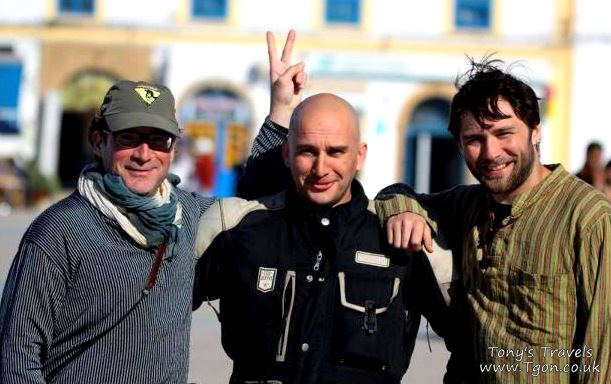

The last town before you cross over into the Western Sahara is called Tan Tan, this town is well known among the overland travelling community because of a specific junction on the way out of town which appears to be a roundabout, but isn’t. There is usually a policeman stood there waiting to stop tourists and get a bribe from them. Luckily we were aware of this and got through without paying any bribes.
Western Sahara
The Western Sahara was a Spanish territory until 1975, when the country was given independence. That is when Morocco and Mauritania laid their claims and starting fighting over the country. After four years Mauritania backed down and Morocco took control of the country and have had a strong military presence there ever since, to try to keep the Western Saharans under control. Morocco have invested a lot of money into the country, making roads and developing areas, which makes it very strange when you have been driving down a mostly deserted desert road and suddenly find yourself driving down a 4 lane highway decorated with statues and find yourself in a very quiet desert city.
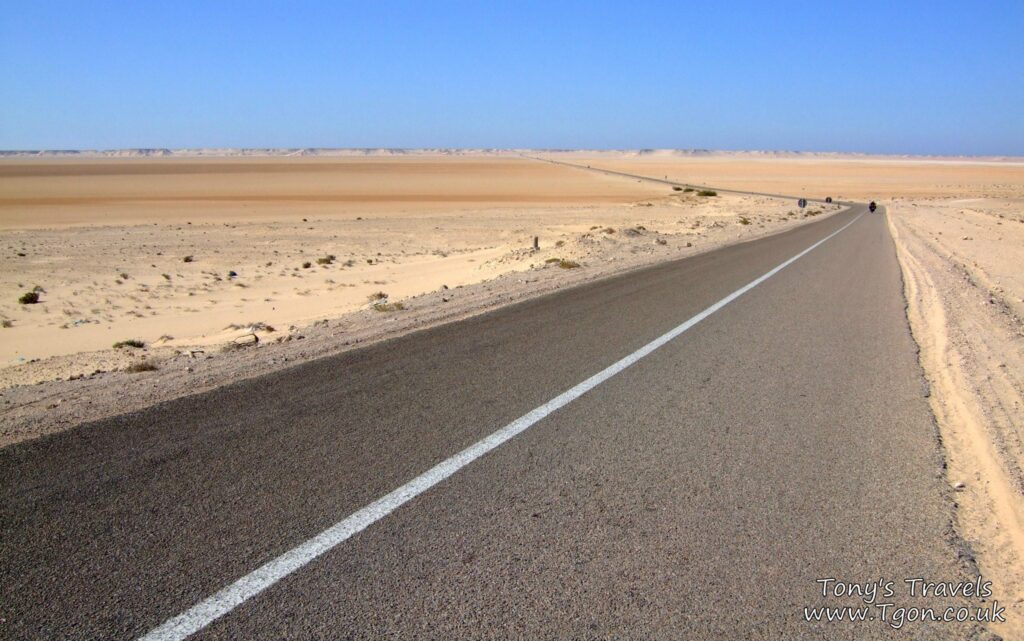
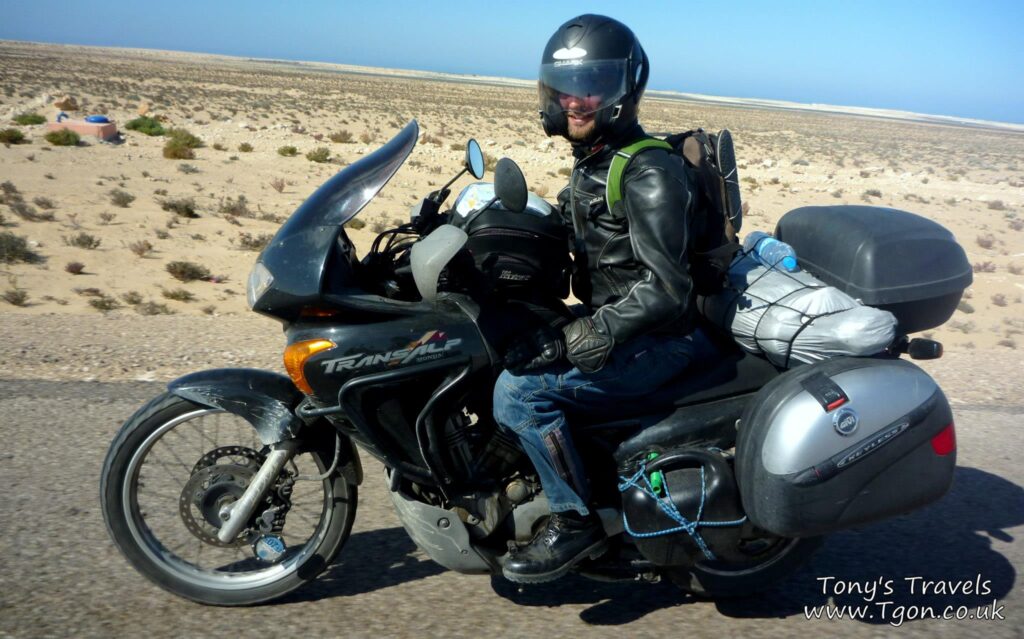
We headed through Western Sahara quite quickly, stopping in three or four towns on the way down to Dakhla. This is were we met up with Charlie again, who had now managed to get himself a Mauritanian visa. We camped in a free public campsite, half way down the peninsular which is where Dakhla is located, and stayed there for New Years Eve. We went into the city to buy food and drinks but out of the two places which sold alcohol, neither would sell any on New Years Eve. Luckily there was a good group of people at the campsite who shared their alcohol with us around a large bonfire. On New Years day me and Charlie were hungover and decided to stay an extra day to recover, but Tony left early in the morning and headed into Mauritania without us. I then headed off with Charlie the next morning and crossed over the border.
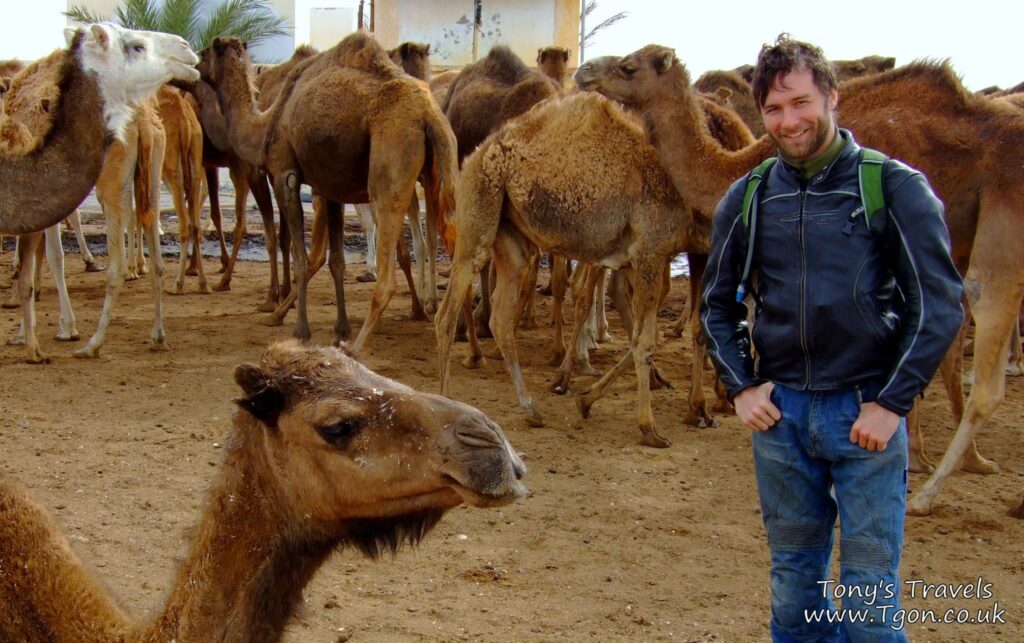
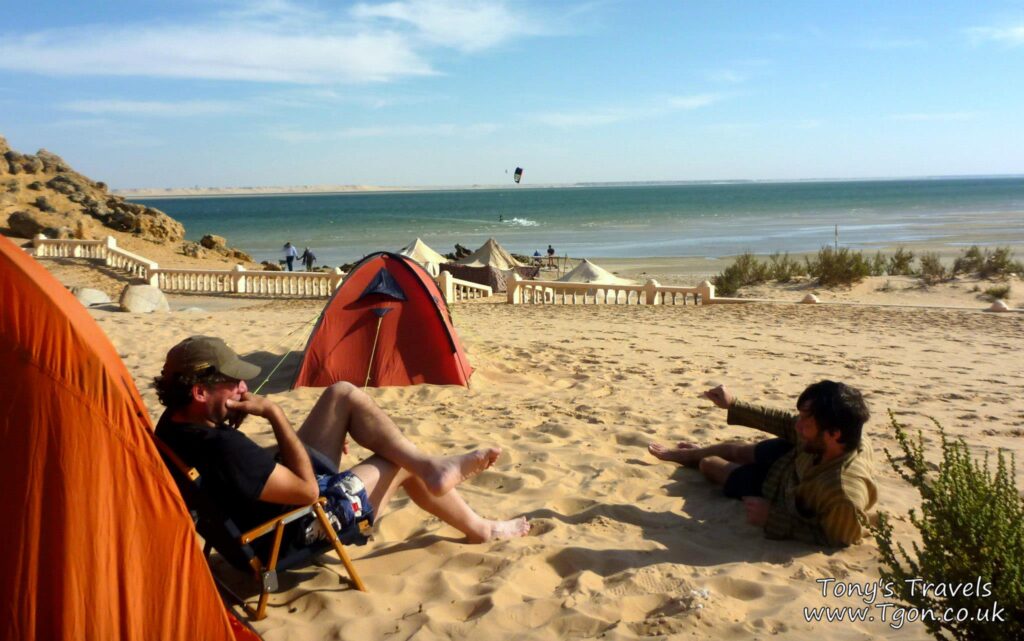
Mauritania
The border crossing into Mauritania was an intense experience. Firstly because of the amount of redundant security checks we had to go through when passing out of the Western Sahara. But mainly because as you leave cross the border you pass under a large archway, as you pass through them the road stops. Suddenly you are driving through the desert following tyre tracks in the sand, driving past burnt out cars, fax machines and other bits of scrap, it was like driving through the setting of Mad Max. The tyre tracks then split off into several different tracks, where people have tried to find a way through with the least chance of getting their vehicle bogged. After driving 3 and a half kilometers you then find yourself at the start of another road which takes you past the customs and into Mauritania. Mauritania is an Islamic republic so any alcohol is confiscated on the border and no alcohol is available within the country itself.
We headed to the closest town, Nouadhibou, to stay for a night, rather than pushing on to the capital city Nouakchott. We slept in a very cheap (but very basic) hotel and walked through the town during the evening, it isn’t really a destination in itself, the people who visit there are passing through like we were. The next day we drove down to Nouakchott, passing one of the worlds longest freight trains which carries iron ore to Nouadhibou to be shipped out of the country. There was an alternate route available, through the Banc d’Arguin National Park, but we stuck to the road in hopes of finding some fuel on the way to the city. When we arrived we met up with Tony again in the hostel and also met some other travelers who we would keep bumping into as we continued our journey through west Africa.
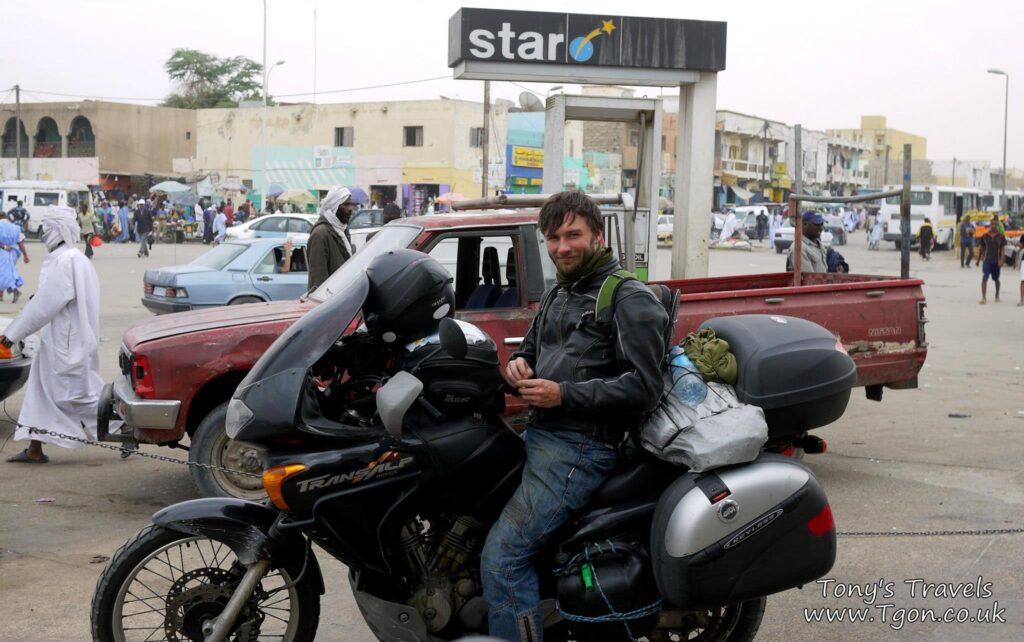
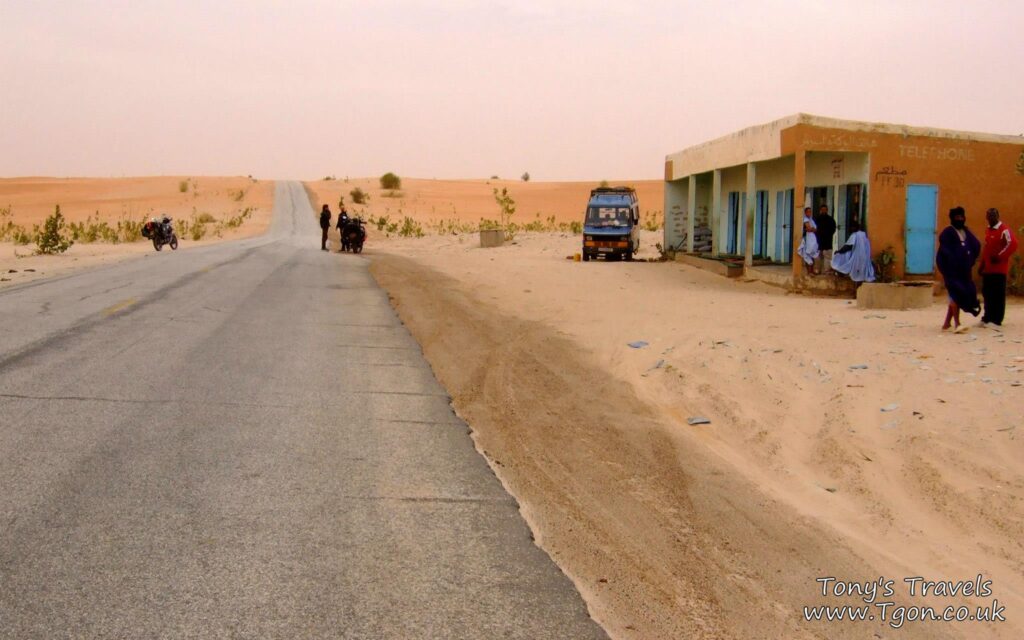
Heidi and Jens were riding diesel powered Royal Enfield motorbikes but were stuck in Nouakchott for the time being because they had both burnt out their clutches while passing through the no-mans land between Western Sahara and Mauritania and were waiting for new ones to arrive. Cristian was travelling with his wife and two small children in their specially converted van. We stayed in the city while we got our Mali visas and then the three of us (me, Charlie and Tony) headed inland on the desert road to Ayoun el Atrous. The journey took three days and included a 75Km diversion on dirt tracks through fields at the side of a road that was being resurfaced and a point where all three of us ran out of petrol due to a petrol shortage in the country (Click to read original Blog post). Mauritania is my least favourite country in Africa, my main memories of it are that it was hot, dry and dusty, with dead animals (dogs, goats, donkeys, camels and cows) rotting at the side of the road, at first I thought maybe they had been hit by trucks, but in some places you could find between five and ten dead cows rotting in the sun. After spending a night in Ayoun el Atrous we headed south to the border with Mali.

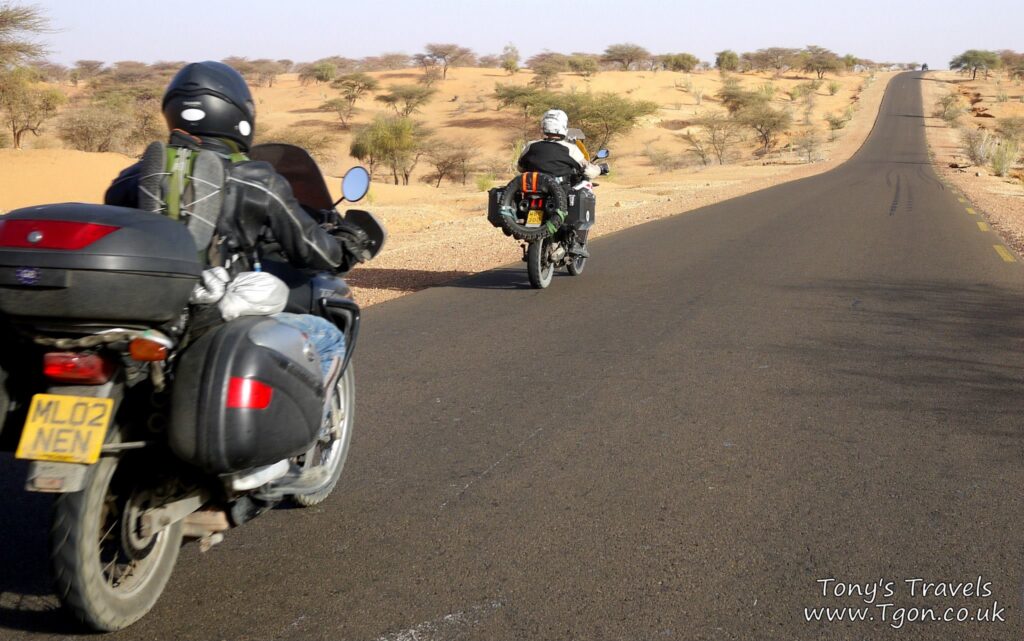
Mali
After narrowly avoiding paying bribes to customs officials on both sides of the border we then found ourselves stuck in a border town called Gogui. There was a police road block stopping people who were leaving the town, asking them to show a stamp that can be obtained from the local police station. We were told that the reason that we need to pay for this stamp is that the Malian government was not paying the police force enough. Unfortunately we had to pay this bribe before we could move on. We spent a with an English woman who runs a charity in a village called Diema, I made some minor repairs to my motorbike and then we headed for the capital city, Bamako. Tony had been planning to meet his friend Tom here and the two of them would ride around Mali together for a month, there were a lot of other travellers staying in the Sleeping Camel and we started to hear about their troubles getting Nigerian visas. We left some of our gear at the Sleeping Camel and headed north towards an area which is very popular with tourists to Mali, the Bandiagara Escarpment. Instead of taking the main road we headed north on the dirt tracks which follow the banks of the River Niger, as it was around the time of the rainy season parts of the dirt track had been flooded by the river. On the way north we stopped at the Great Mosque of Djenné, a large mosque dating back to the 13th century, it is made from wooden poles and mud. The town of Djenné is cut off from the road by a river, so visitors have to pay to ride the ferry there and back, luckily our route along the dirt roads actually brought us in to the town with out needing the ferry, although we did use it to leave.
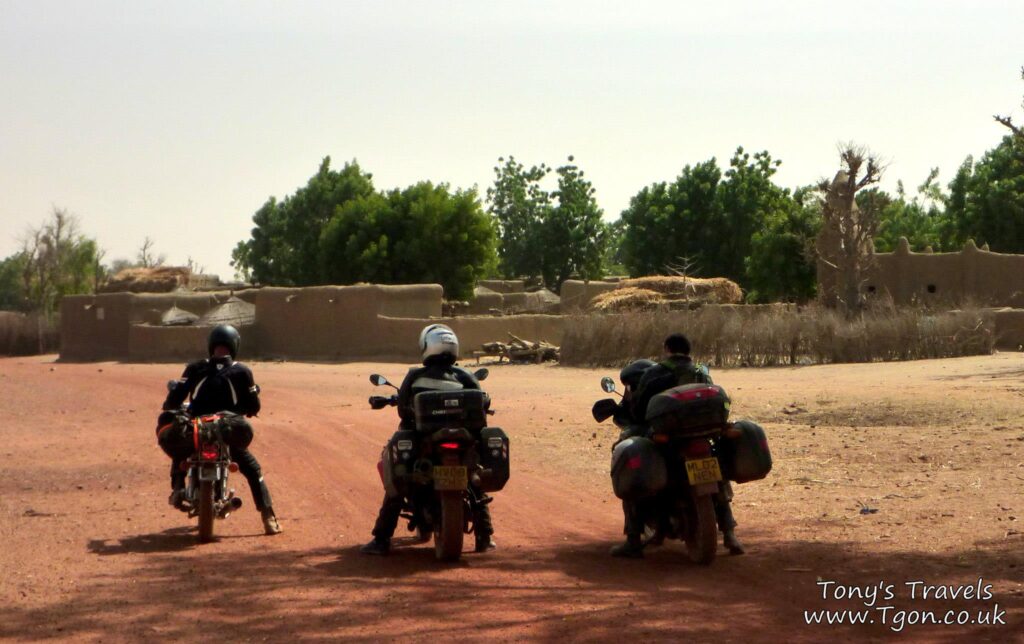
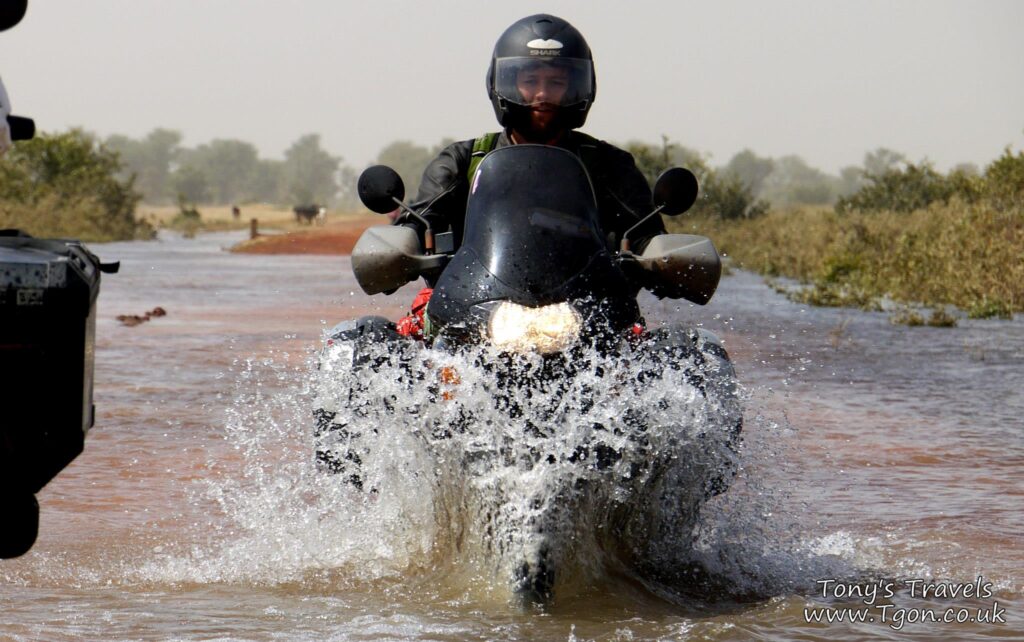
From Djenné we headed up to Mopti for a night before heading out to Bandiagara, Tony wasn’t interested in hiking along the escarpment so I headed out with Charlie and Tom for a few days hiking through the Dogon Region. The area is made up of a collection of villages, some on the top or the escarpment and others along the bottom. The Dogon people who live there have large farms which produce a huge amount of vegetables which are then sold all around Mali. The villages are very basic and full of history and culture. On rare occasions, tourists can see the Dogon people performing a traditional dance in which they wear masks which represent the different animals of the area. The main point of interest is the remains of ancient structures which are built in cracks and ledges on the cliff face. Some of these (the ones which are lower down the cliff) are ancient houses of the Ogon (elders chosen from the Dogon villages), who would live for a year on the cliff and commune with the spirits who were said to live in the structures further up the cliff face. These higher structures are said to be the homes of an ancient race of pygmies, called the Tellem, who lived in the area before the Dogon, and for a time lived along side them, before disappearing. We spent the days hiking and the nights sleeping on the roofs of the Dogon flat roof mud houses, with nothing but a foam mattress and a mosquito net. It really was an amazing experience.
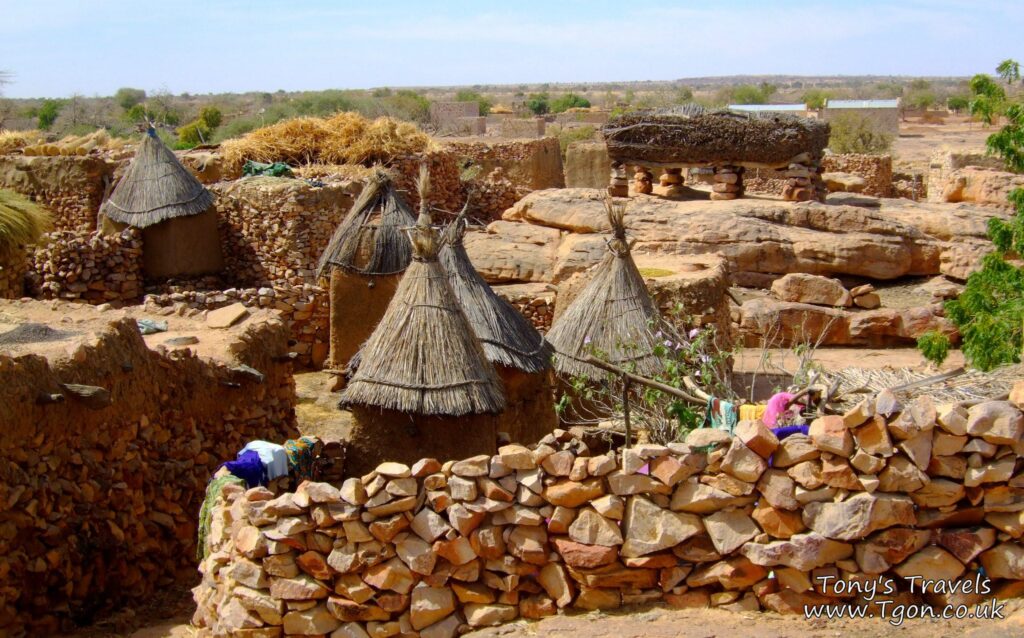

After a few days hiking we headed back to Bandiagara to meet Tony and then I headed south, back to Bamako with Charlie. It was around this time that the trouble was starting in the north of Mali. The Tuareg people who live in the area have been trying to gain independence for many years, each time they start to rebel again, the Malian government gives them more autonomy. At the time that we were in Bamako, the Azawad movement were taking control of the small towns in the north of the country. We heard more bad news about the Nigerian visas, a bus load of tourists had been waiting for two weeks for a visa which is supposed to take 24 hours to give out, but some individual travelers had managed to get their visas without an issue. We decided that we would try our luck, but the next day the news reported that Nigeria had temporarily closed its borders. This was when we decided to join Heidi and Jans, who were planning to ship their bikes from Ghana to Namibia. But the next stage of our time in Mali was awesome, after speaking with a few of the people at the Sleeping Camel, we managed to gather together a group of around 10 people to head south to a waterfall for a couple of days camping. Including an English guy called Matt who had driven from the UK to Timbuktu in a charity rally and an Australian girl who had travelled through West Africa by bicycle. We all travelled down there and along some tricky dirt roads to a great spot, the area is supposed to have a ban on camping, but we spoke to the people in the village and they agreed to let us stay. We bought some chickens and cooked them over the camp fire. After another brief stop in Bamako to collect out Burkina Faso visas we headed east, with a smaller collection of our waterfall camping group, to another waterfall. This one was much larger than the first and is located a short distance south of a city called Sikasso. We stayed there for a few days before I headed over the border, into Burkina Faso, with Charlie and a passenger on the back of my bike, a girl called Lucy who was working as a tour guide in west Africa.

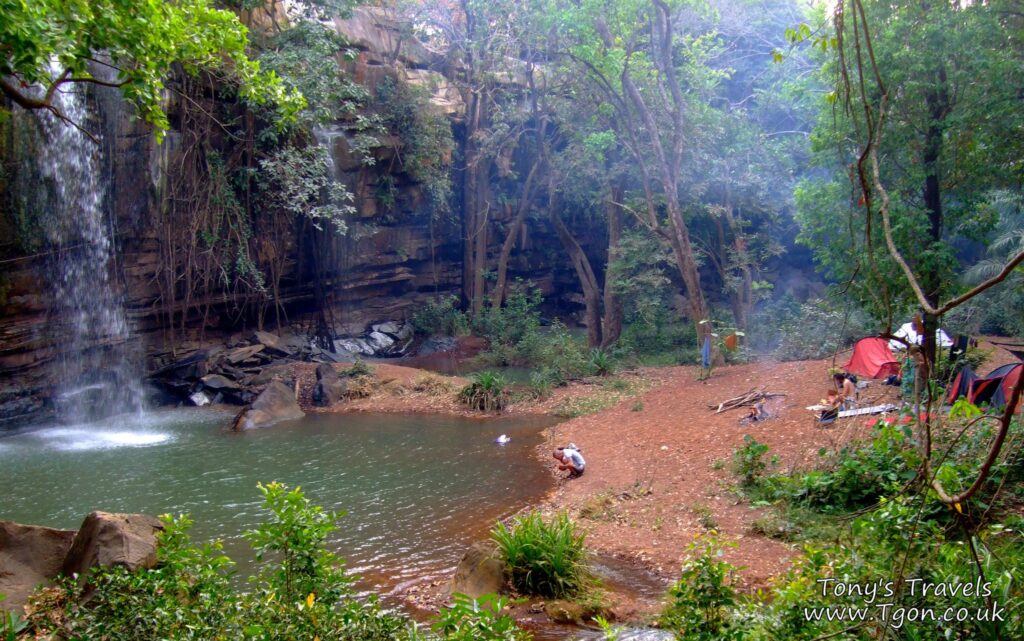
Burkina Faso
The three of us crossed over the border into Burkina Faso and headed to a city called Bobo-Dioulasso. As we crossed over the border riots were happening in Bamako, the families of the soldiers who had been sent to fight the Tuareg rebels. They were protesting the lack of equipment provided for the soldiers. When we got to Bobo, we stayed in a hostel run by an Italian guy who claims to make the best pizza in the world. While we were there we met up with a guy who we knew from Mali, he was a tour guide who was working with the Sleeping Camel in Bamako but had returned home to Burkina Faso. He decided to come with us on the motorbikes for a few days in the south of Burkina Faso, around Banfora. From there we went to see the hippos in Lake Tengrela before heading out to Sindou village to visit an area with large rocky outcrops to visit. We headed back to Bobo for a few days before heading to the capital city Ouagadougou, after a day or so Heidi and Jens arrived, followed by Cristian and his family. It was great to keep meeting up with people who we had met weeks or months before. While in the capital we got a Visa Entente which is a visa which covers Burkina Faso, Benin, Togo, Niger and Côte d’Ivoire, although we weren’t planning to go into Niger or Ivory Coast. The great thing about this visa is that you could fly into one of the countries with a tourist visa, then get the visa entente and travel through all the countries and the visa entente would allow you to re-enter the first country to fly out again. Could make a good holiday for a few months. While we were in Ouagadougou there were large refugee camps forming, groups of Tuareg people who were escaping the violence in Mali. We spent a few days exploring the city before we headed east towards the border with Benin. It started to get dark before we arrived at the border so we stopped overnight in a lodge in the Arli National Park. The next morning we crossed over into Benin.
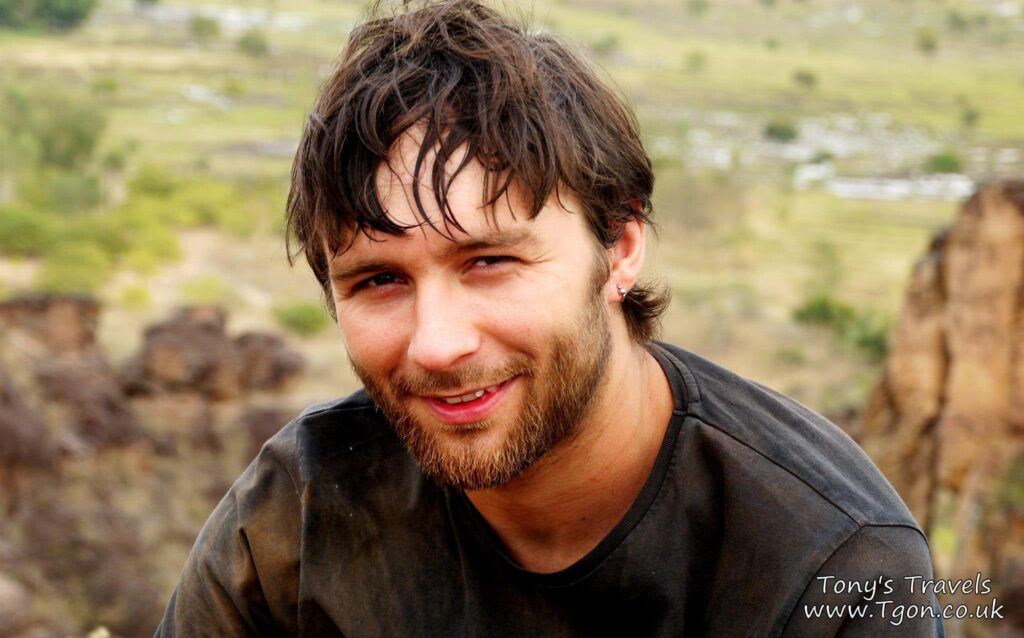

Benin
The border crossing into Benin was the easiest and they had the cleanest immigration posts we had seen so far. We headed into Pandjari National Park and spent the night camping by a waterfall. From there we drove almost the entire length of the country to Abomey, we stopped here because the Lonely Planet said it was a ‘must see’ for travelers in Benin. We didn’t think it was so great so we headed to the beach, we hadn’t been to a beach since Western Sahara and we were eager to see the ocean. On the way to Grand-Popo I get very dehydrated and had to stop before I passed out. When I arrived at Grand-Popo I threw up everything I had drank and started to feel really ill. We decided to take some rest days there and became friends with a guy who was guarding a hotel that was being repaired. We ended up going to stay there with them and drank some of the local liquor. This was where Charlie met Ida. She was working the bar at one of the hotels and she decided to leave with us as we headed to Ghana. So the three of us headed off together over the border into Togo.
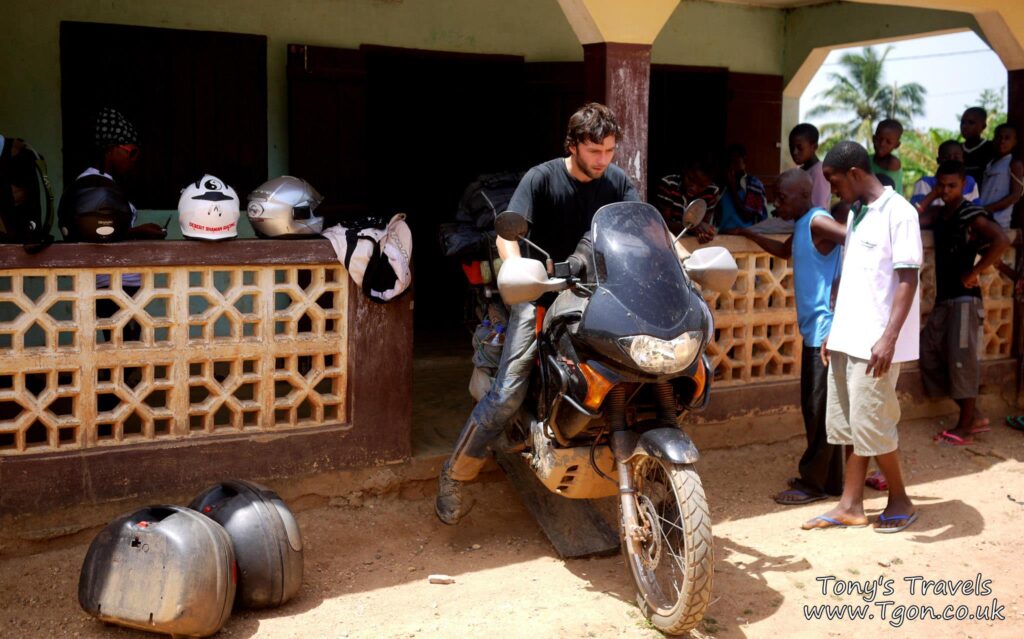
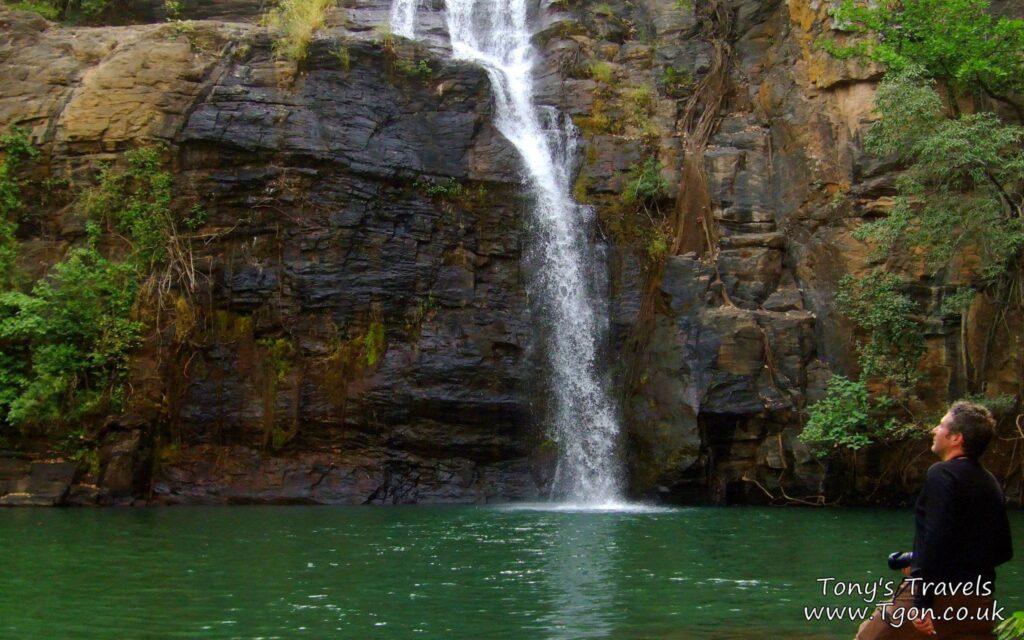
Togo
We drove the width of the country, following the coast, taking just a few hours, then checked in to a very cheap hotel. Charlie wanted to get some work done on his motorbike, so we waited in the city for a couple of days. This was when we met Andrew, an American guy who had bought a motorbike in Senegal and was travelling around West Africa. We decided to head up into the mountains of Togo for a few days of camping, hopefully at some waterfalls. We drove up to Kpalime for the first night, then stayed at a nice waterfall in Badou. This is where we experienced a Christian religious festival involving the blessing of the waterfall, after the blessing the whole congregation got undressed and bathed in the plunge pool. During those days we experienced the most begging that we had seen so far. Up to this point, only children had been begging, and the adults would discourage them. Now we found that entire villages would line the road shouting at us, asking for gifts. The only contact they have with westerners is when religious charities drive into the mountains to give them donations. We spent a few more days in Lome before we crossed over into Ghana. One of my favourite things about Benin and Togo was the motorbike taxis. They are cheap, fast and a lot of fun.
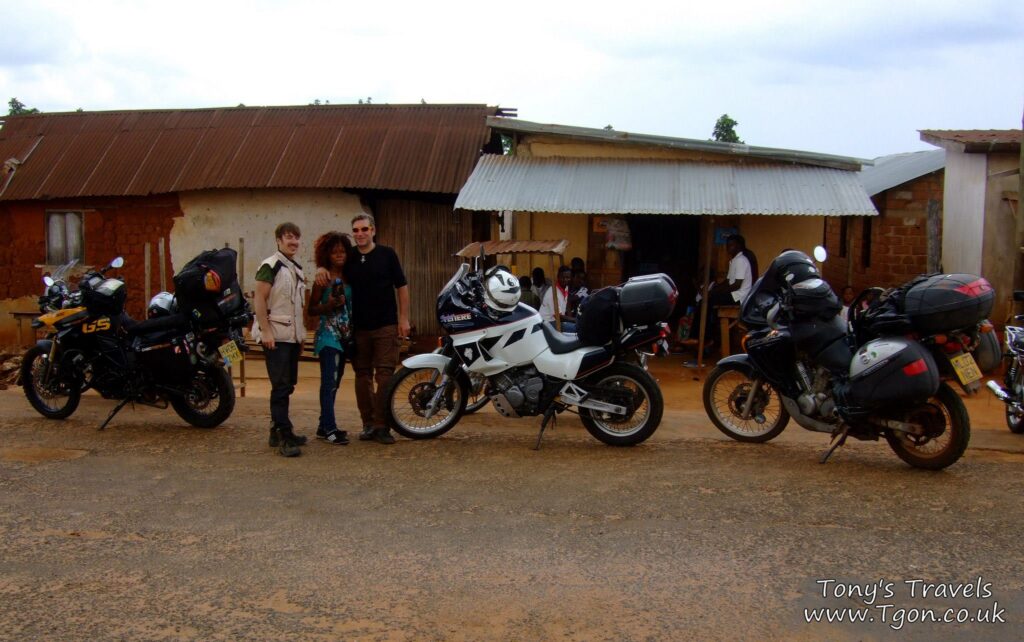
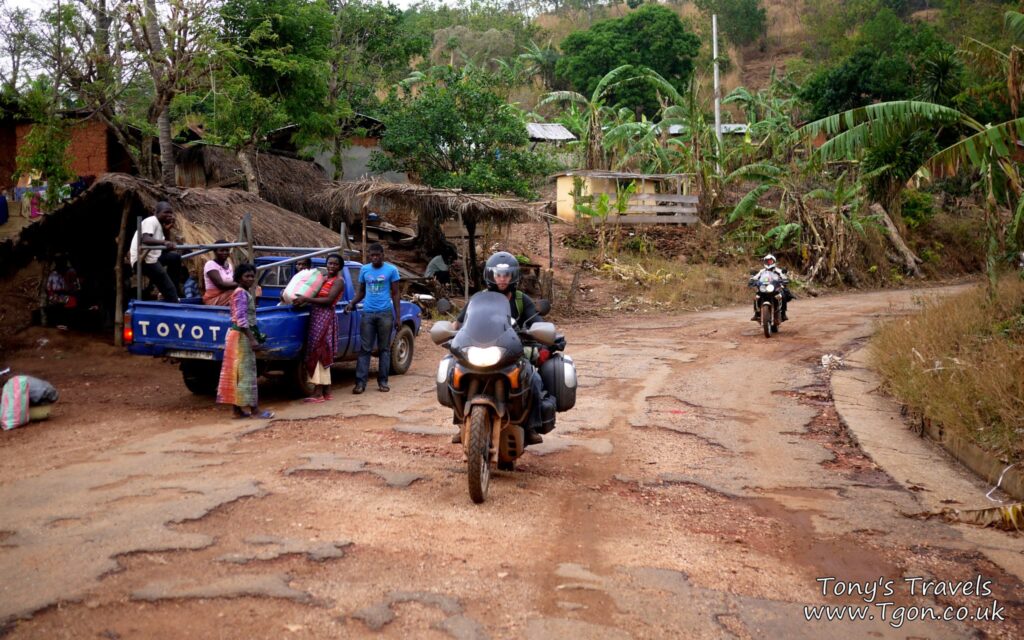
Ghana
We were worried about crossing the border, our visas were now technically invalid. We were supposed to enter Ghana within 30 days of getting the visa authorised, but we were a couple of weeks late. Luckily the immigration officers didn’t even check the date, just wrote down the visa number. Unfortunately we weren’t so lucky with the bikes. It appears that Ghana now insists on visitors having a carnet de passage for their vehicle, unless it is registered in a West African country. This meant that Andrew could pass the border but me and Charlie had to stay go and speak with the head of immigration. Luckily he let us in, but by the time we had done this, the accountant had gone home. This was a problem because we had to pay the fee to the accountant and get a receipt before we could cross the border. Instead of telling us to wait overnight, a guy went off on a small motorbike and brought the accountant back to work. We stayed in the border town overnight before heading to Accra, the capital city. During out time in the city the whole country had a blackout. This is where we separated with Andrew and headed west along the coast to a lodge called the Green Turtle next to a village called Akwidaa. Over a few days there we met up with Matt again, then Heidi and Jens arrived and Max and Marrian, who we had originally met in Bamako. We all met up here to start making arrangements for shipping out bikes together. This was also when I met a great girl called Parisa who was on holiday in Ghana. I set off on a small trip with Parisa and Matt to a stilt village, over a lake, called Nzulezu. We stayed overnight there, swimming in the lake, taking canoe rides and drinking local liquor.
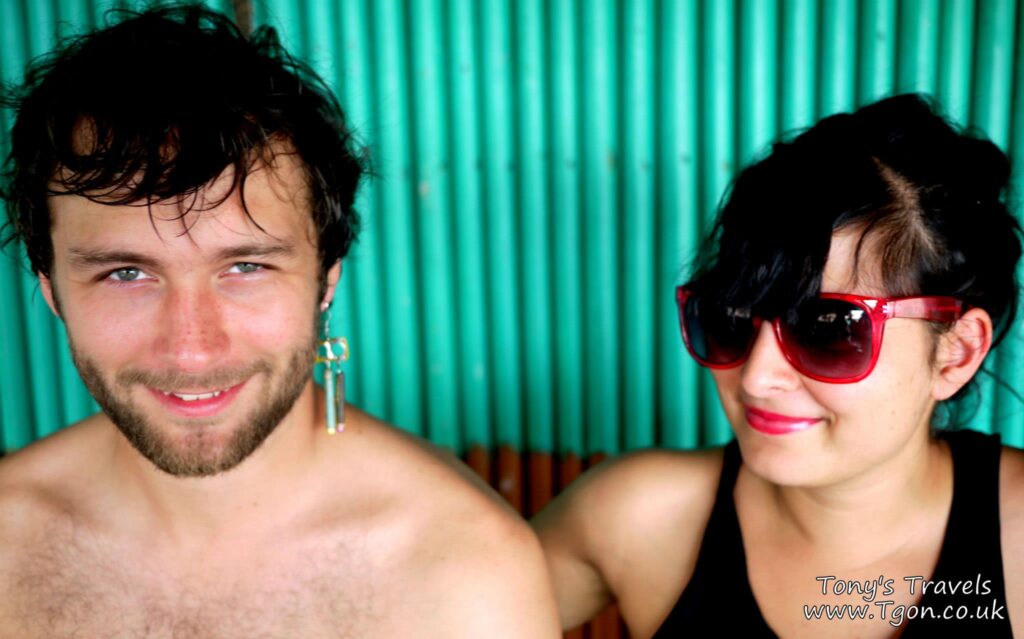
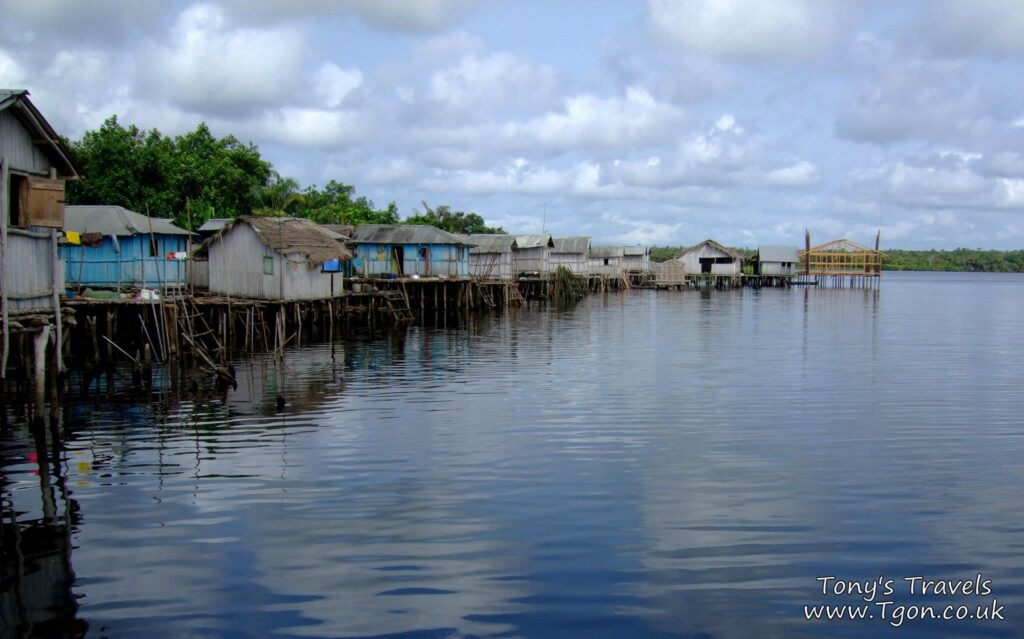
When we got back to the Green Turtle we met up with Tony again, we hadn’t seen him since Bamako. We then headed east again, to Tema, to sort out the paperwork for the shipping and packing the bikes into the container. The seven of us stayed in a cheap hotel next to the docks, Me and Charlie, Heidi and Jens, Max and Marrian and one guy I hadn’t met before, a guy called Hubert who was 8 years into a 10 year trip around the world. We packed up the bikes and headed north on public transport, to Peki, to meet Matt for his birthday celebration. At this point Parisa had to leave, so I headed a little further north to Wli waterfalls near a town called Hohoe with Matt and Charlie. The bikes were supposed to take 2 weeks to arrive in Namibia, but we got a call from the shipping company, saying that they had accidentally forgotten to take our container. This meant that it wouldn’t go for another week, leaving us with 3 weeks before we had to be in Namibia. Charlie flew back home for a couple of weeks, while I spent 2 weeks moving up and down the Ghanian coast. After having an awesome time meeting other travellers and visiting national parks, I caught a flight south to Namibia.
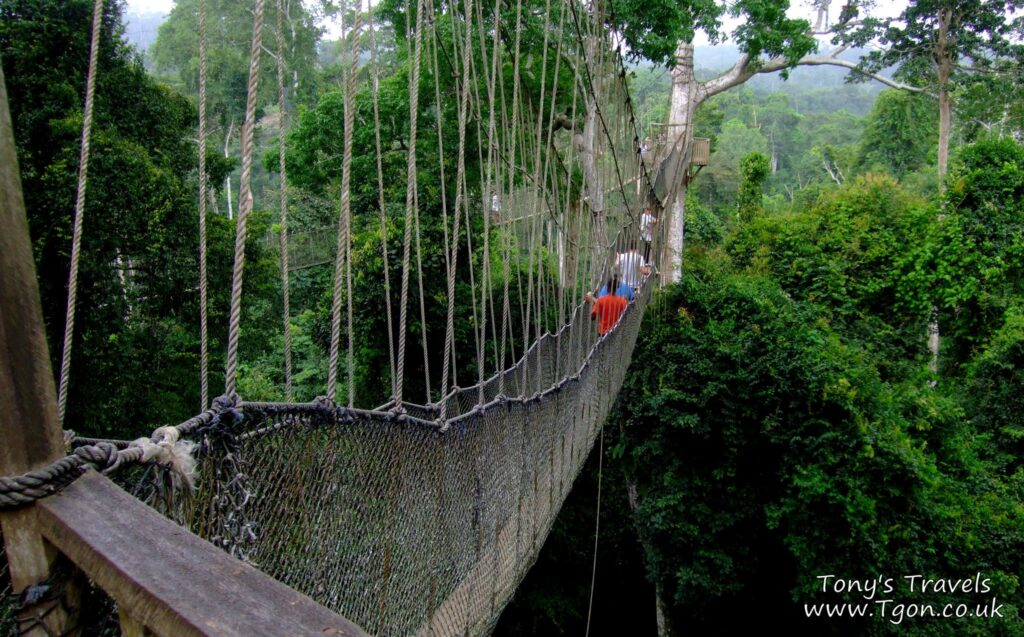
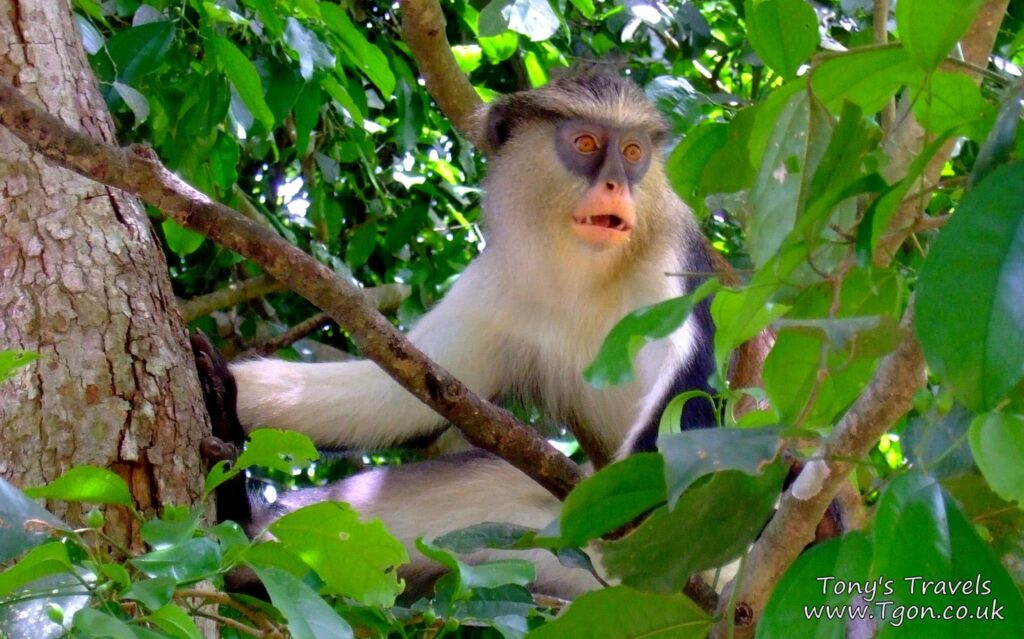
Namibia
I landed in Windhoek, the capital of Namibia, and stayed there for a week. It is the strangest capital city I have ever visited. The city is so empty, I am used to capital cities being full of people day and night. But Namibia was clean and quiet and empty. I stayed in a hostel and met several Germans who were studying at the university. The bikes were due to arrive, so I headed to the coast, to a town called Walvis Bay. I waited there for the rest of the group to arrive, after a week of waiting and filling in paperwork, we got the bikes back. I had to pay a deposit of around £400, this was because I didn’t have a carnet de passage. The money would be refunded to me after I leave the country with the bike. After servicing our bikes I set off south, with Charlie, to an area in the Namib desert called Sossusvlei. We headed out early in the morning to catch the sunrise from the desert.


On the way back north, heading to Swakopmund, I had a crash. There are very few tarmac roads in Namibia, most of the roads are gravel roads. The bike skidded in some deep gravel and sent me and the bike rolling along the road (Click to read original Blog post). I picked myself up and drove the rest of the way to Swakopmund to take a few rest days. I had fractured a rib, broken my scaphoid and badly bruised my foot. After the rest days we headed north again through the Skeleton Coast towards the Angolan border to visit a waterfall.
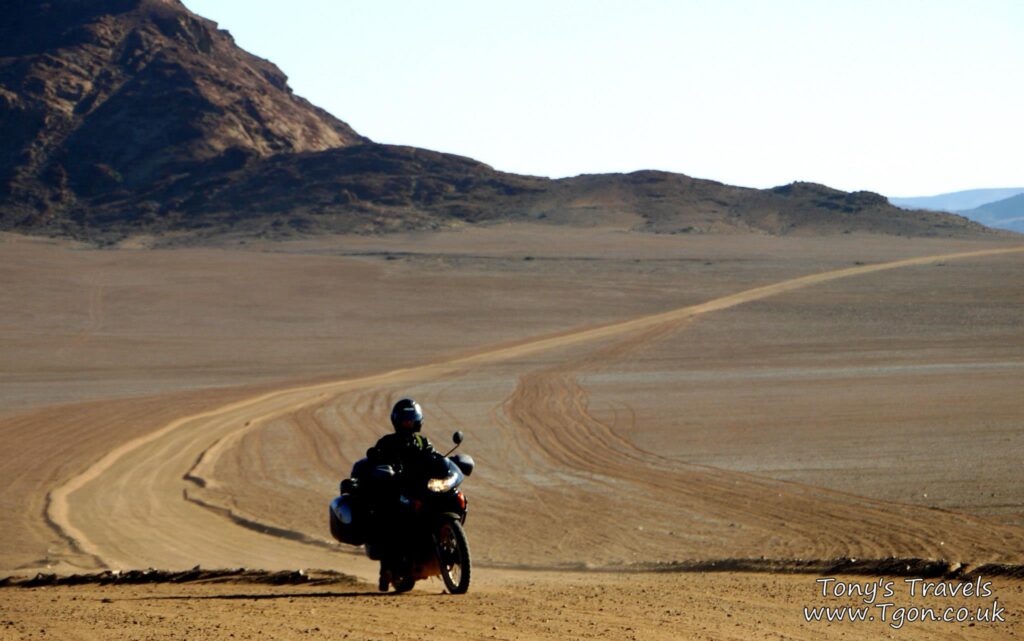
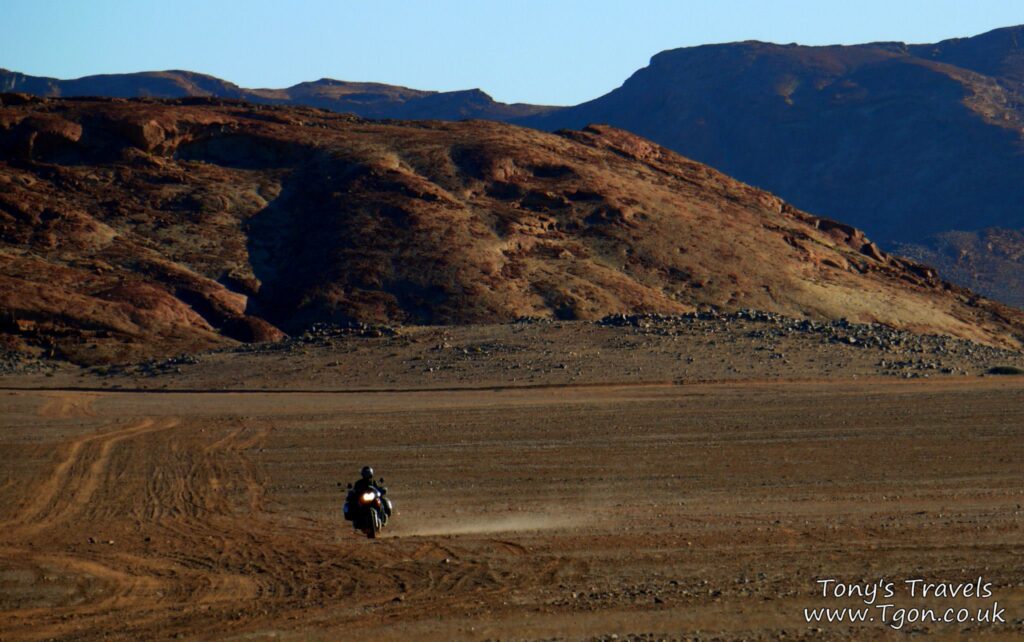
Epupa falls is on the Kunene river which forms the border with Angola, we camped by the falls and spoke with some of the Himba people who live in the area. They are a tribe of people who still live a relatively traditional live in the northern regions of Namibia. From the falls we stuck to the dirt roads and followed the Kunene river to the east, cutting across to the Caprivi strip. We stayed in a beautiful lodge by the side of a river which was home to lots of hippos, at night they call out like Jabba the Hutt. The lodge was right next to a safari park, called Mahango, its a self drive park, but you can’t go in on your motorbike. We waited in the car park for a group with some spare seats and shared the ride. From there we headed over the border into Botswana.
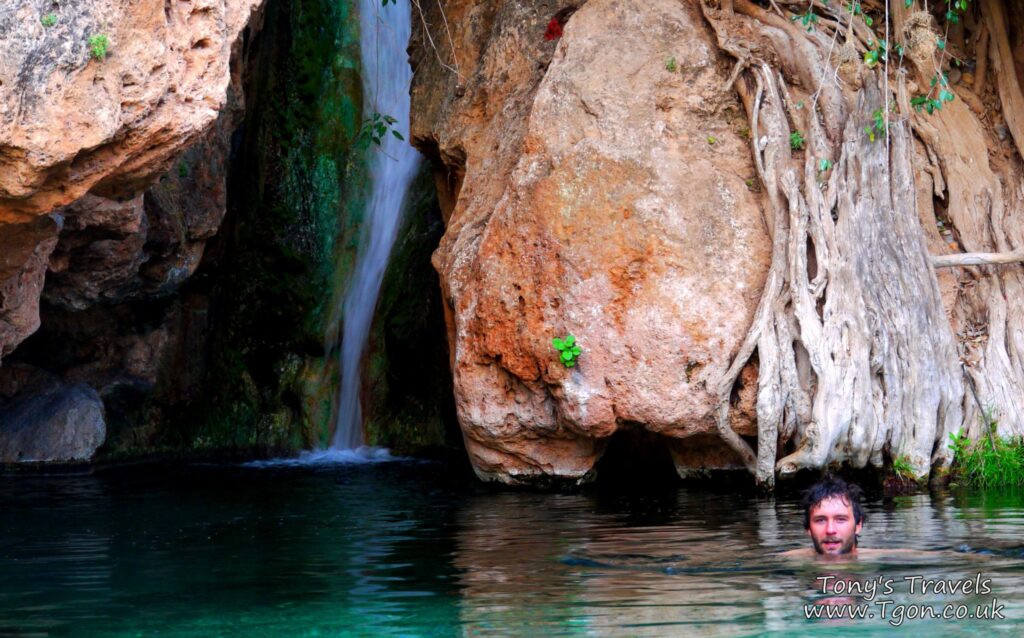
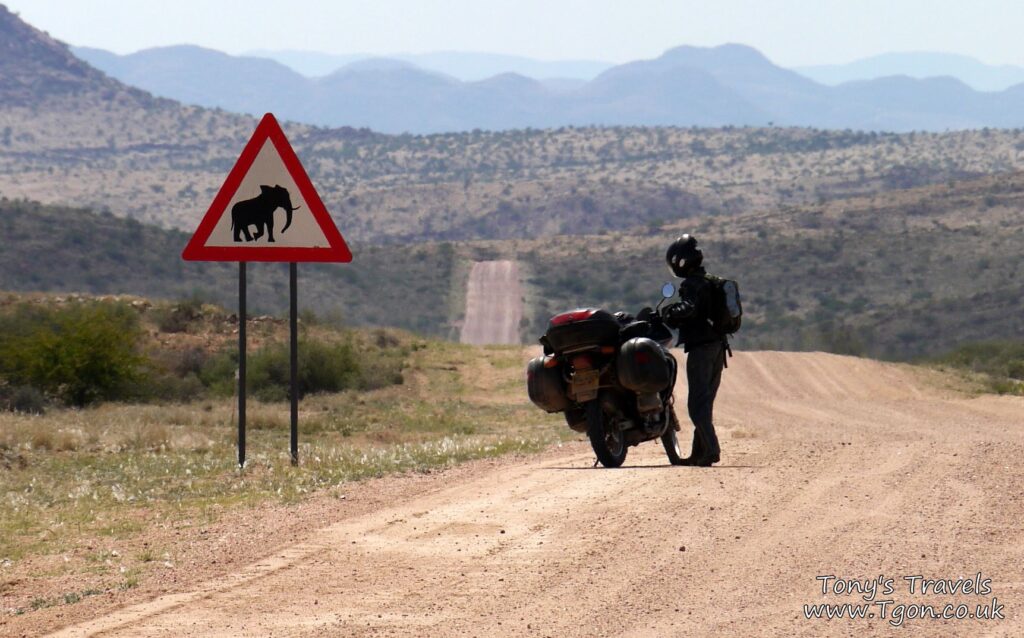
Botswana
We wanted to take a canoe safari in the Okavango Delta, we had heard of a lodge, called Mbiroba, which is owned my a community project, it is cheaper than the ones run by the foreign tourism companies, plus all the money goes to the local community. We drove down the full length of the western side of the pan handle, only to find out that the water taxi, that we were planning to take, no longer runs. So we headed all the way back up to take the ferry and drive the full length of the eastern side. It was night time when we arrived and the manager gave us an upgrade to stay in a lodge for the price of camping. The next day we headed out on a mekoro, the local traditional canoes, and camped overnight on an island in the delta. We saw elephants, hippos, warthogs, tiny frogs and thousands of insects. After another night in the lodge we headed back through the Caprivi strip and to the border with Zambia.
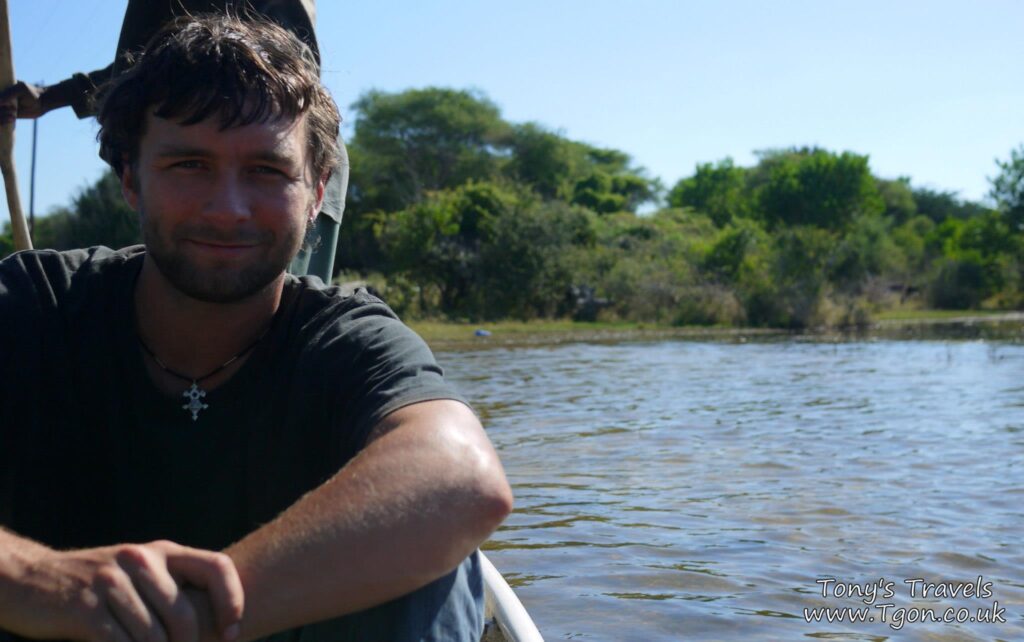

Zambia
The first stop in Zambia was Livingstone, we were there during the full moon, so we could go to see the lunar rainbow at Victoria Falls. Instead of paying to go into the park, we went out through the immigration office towards the border with Zimbabwe. The borders are separated by a bridge across the river, with a great view of the falls but without the cost. I made sure I got all the paperwork sorted out to get the deposit back from the Namibian government, then we headed towards the capital city, Lusaka, but around half way there we stopped at a crocodile farm on the banks of Lake Kariba. We tasted crocodile meat and went on a tour of the farm. When we got to Lusaka we separated, Charlie went to a safari park, while I went into Malawi. The road from Lusaka to the border is a really nice ride, with mountains, baboons in the road and a huge bridge.

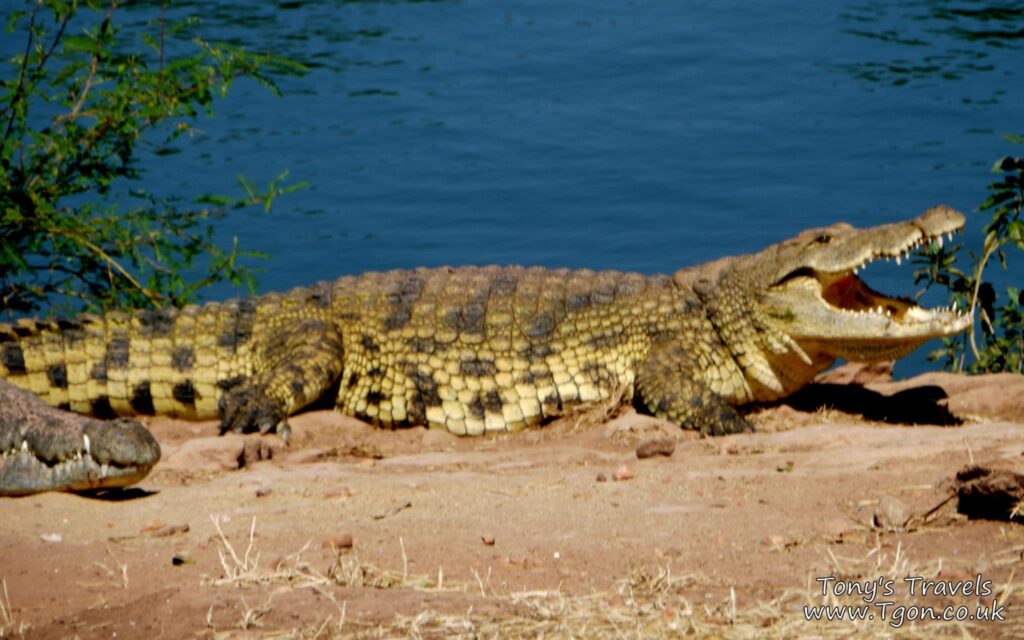
Malawi
I stayed a night in Lilongwe before heading to Monkey Bay on the lake side. I stayed in a rustic campsite and befriended two of the girls who were working there, when Charlie arrived the four of us headed to the next village, and the place which became my favourite place in the world, Cape Maclear. We camped in the Malambe Lodge for almost 2 weeks, spending our days swimming in the lake and relaxing in the lodge. The lake is great for snorkeling and is home to fish eagles, which you can go out and feed with the local guides. From there we followed the lake shore north towards the Tanzanian border, stopping in Nkhata bay and a small village called Livingstonia. We stayed in an amazing lodge in Livingstonia, owned by a Bulgarian guy who has built up an amazing sustainable farm garden. The views are also amazing, but it seems like everywhere in Malawi is beautiful, you have the lake surrounded by beautiful white sand tropical beaches, lots of mountains with great hiking and the friendliest people I have met. After spending an amazing month in a beautiful country we crossed the border into Tanzania.
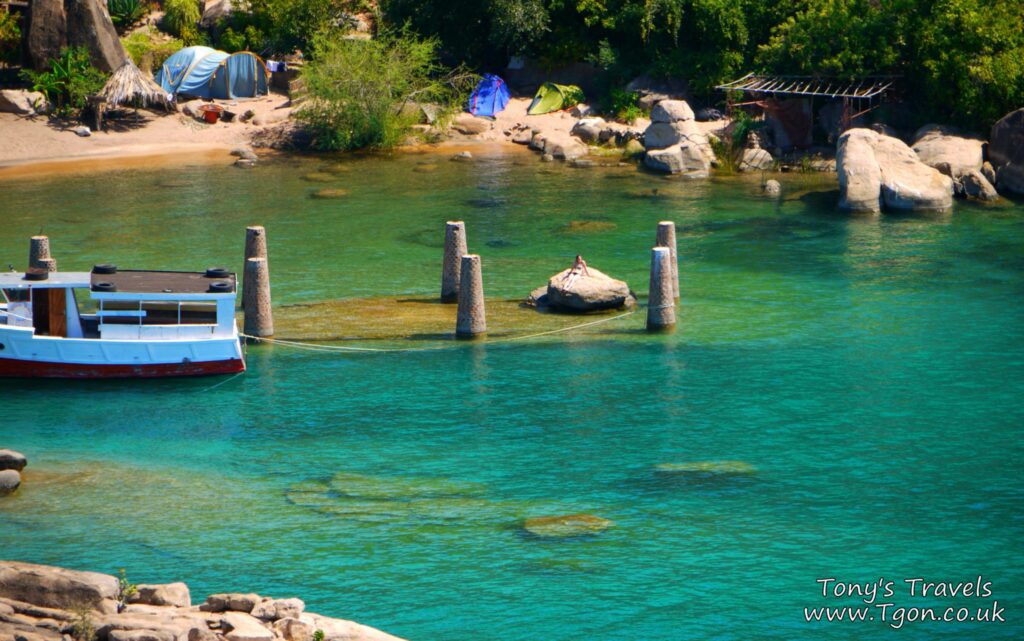
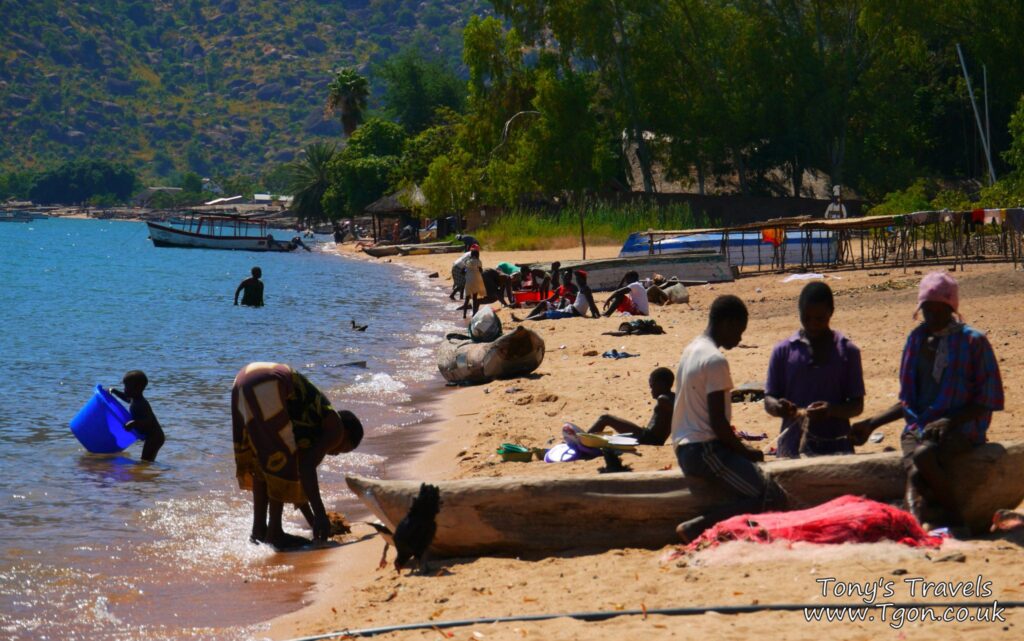
Tanzania
I had been looking forward to getting back to Tanzania since I first set off from Sheffield. I spent a year teaching in Zanzibar between 2005 and 2006, and I was really looking forward to getting back to Makunduchi village to see my old friends. So I headed straight from the border to Dar es Salaam, then we arranged for the bikes to be taken over to Zanzibar on a cargo ship. From there we drove down to Makunduchi and visited to school, It was great to see everyone again. Charlie wasn’t going to be around for long, so we went to visit all the best spots on the island before he headed back to the mainland and onwards through Kenya. I went back to live in Makunduchi and started teaching IT and English.
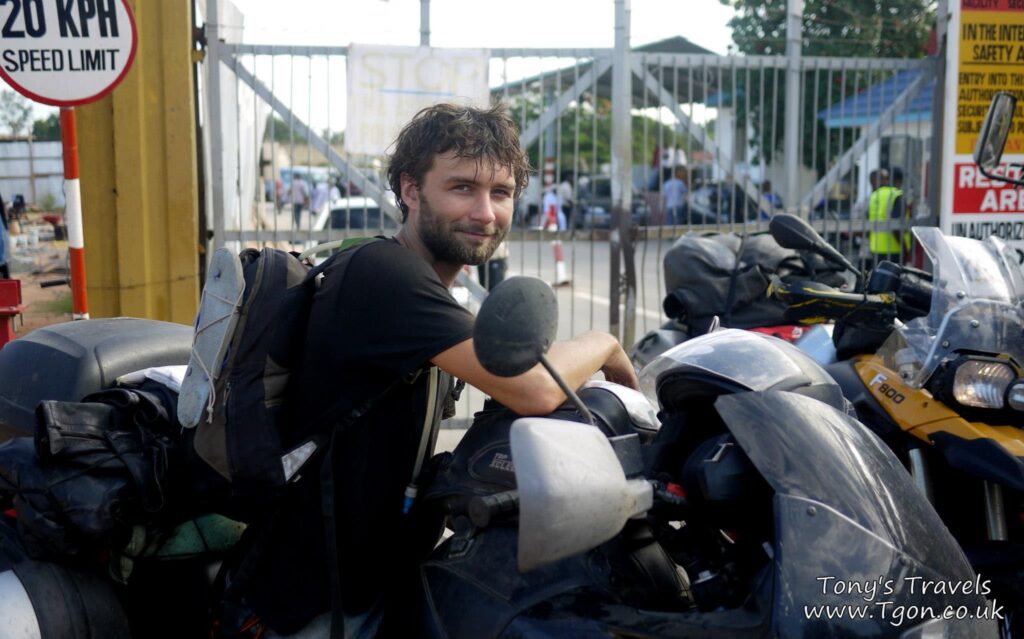
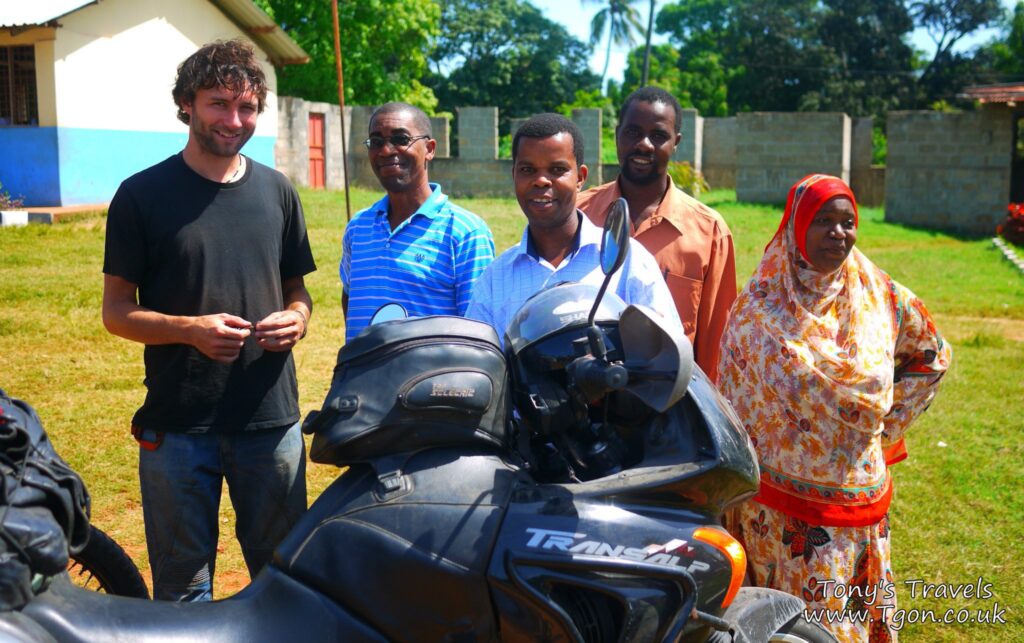
One great thing was that I managed to see the annual Mwaka Kogwa festival, the year I spent in the village just missed the festival at either side of my time there. The festival involves the north and south sides of the village competing against each other (Click to read original Blog post). I was hoping to get temporary residency in the country, as I had when I was there before, but Ramadan came along and stopped the process in its tracks. The only problem with that was that my visa actually ran out during Ramadan, this situation then escalated to the point that I was receiving messages from government officials telling me I had to leave the country. I then had to pay a bribe to get a one month extension on my tourist visa, this would then allow me some time to leave the country and re-enter to get another 3 month visa. By the time I managed to get this sorted out I only had eleven days to leave the country. This meant that I had to quickly pack all of my belongings and drive south back to Malawi. I decided that I should spend some time in Malawi after having driven all the way from Dar es Salaam, but at this point I was still planning to return to Dar es Salaam and fly to India.
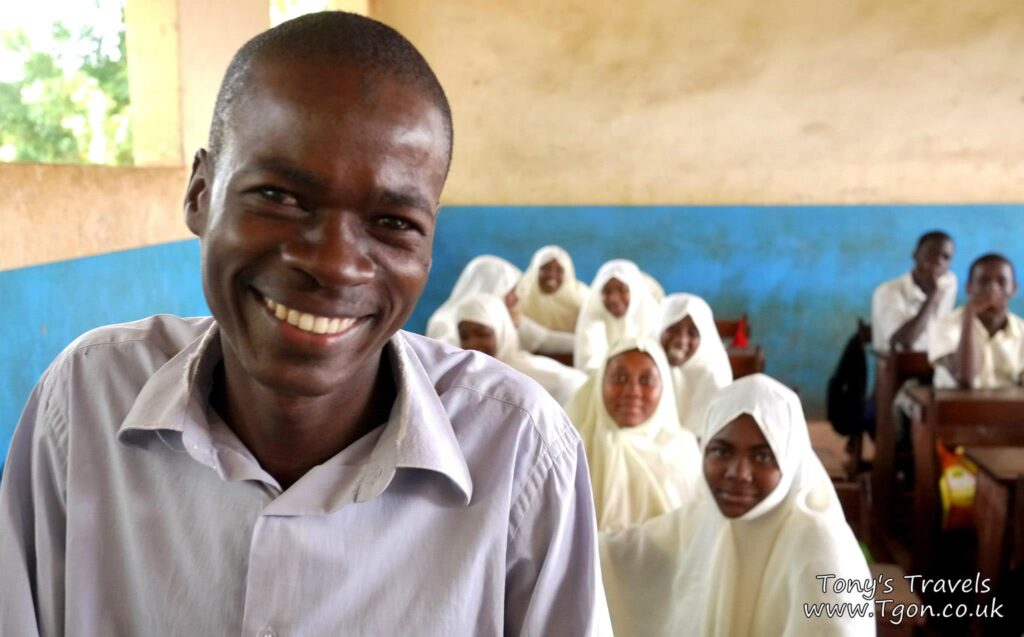
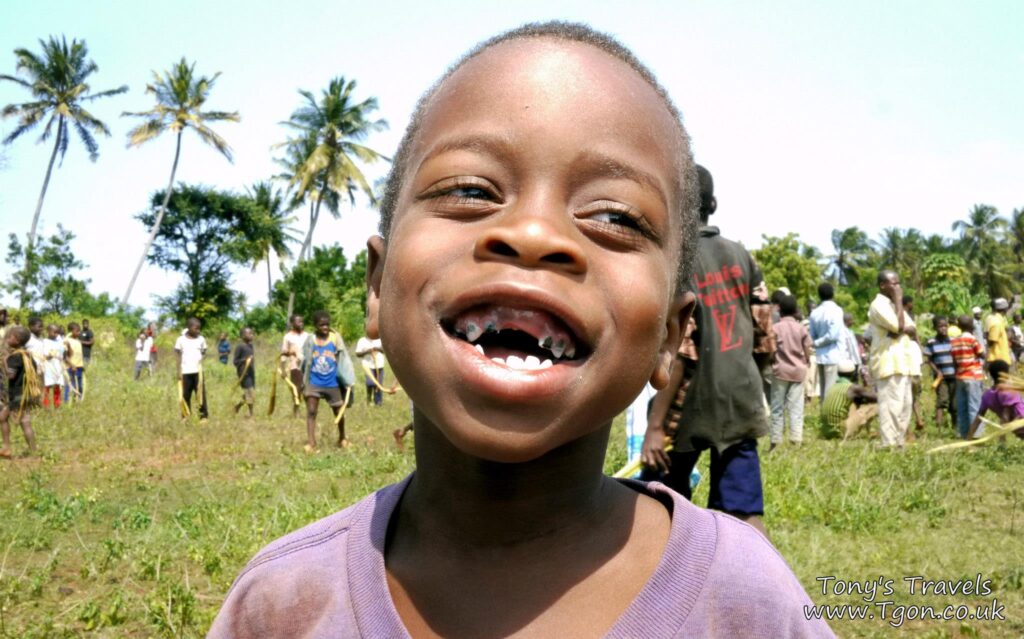
Malawi
It was great to get back to Malawi, although my first month was spent living in the capital city trying to sell my motorbike. This month was made worthwhile by the people I ended up living with, a great mix of warm, welcoming people that it was great to meet and spend my time with. While I was there, it was announced that I had become a Jupiter’s Traveller, just in time to meet up with another Jupiter’s Traveller who I had been talking to via Facebook for around a year. I also bumped into Tony again, he had made it, overland, down to Namibia then travelled through South Africa and up to Malawi, it was great to see him again and catch up on each others stories. As soon as I had sold my bike, I headed back to my favourite place in the world, Cape Maclear. I stayed on the beach for a month, hanging around with the staff of the lodge and enjoying the lake and village. This was where I met a great girl called Nofar, she and her friend were backpacking through East Africa, down to South Africa. We had a great time in Cape Maclear, but then I got Malaria, luckily for me Nofar was there to help me through it (Click to read original Blog post). Around this time the rainy season was starting, this made for some great evening entertainment, as storms would move over the lake and we could watch the lightning. Unfortunately, the first rains managed to find my laptop and kill it. I also changed my plans, as Nofar was heading to South Africa through Zambia and Botswana, I decided to head through Mozambique to meet her there. It was around this time that I met Thomas, he had been on the road the same amount of time as me, and had just come from Australia, he told me about the wages and I decided to go to Australia to earn some money while I was still young enough to get the Working Holiday Visa. So after a month on the beach and celebrating my 29th birthday there, I set off through the south of Malawi and into Mozambique.
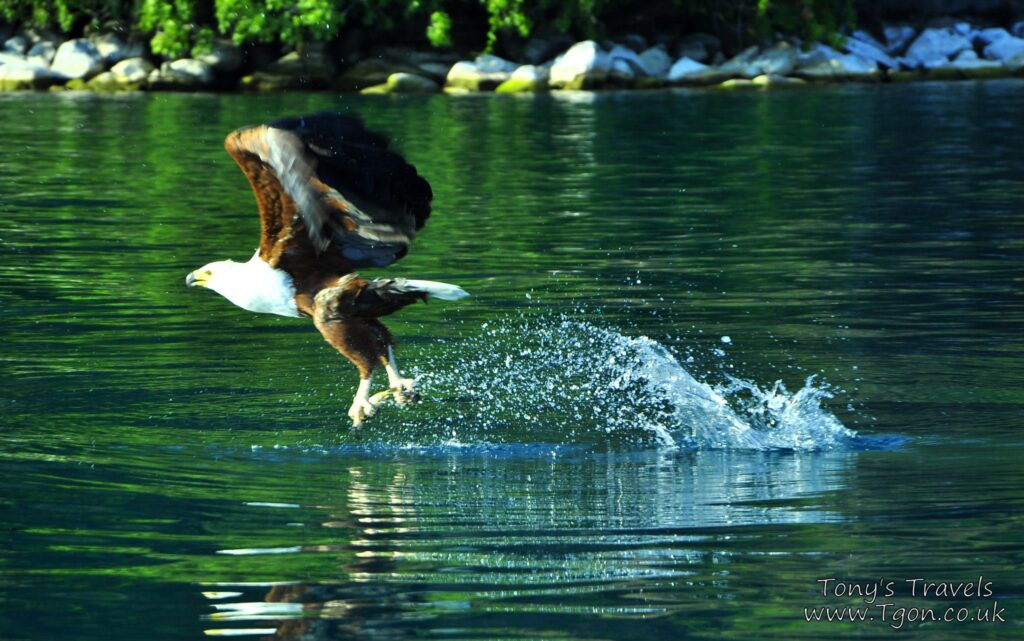
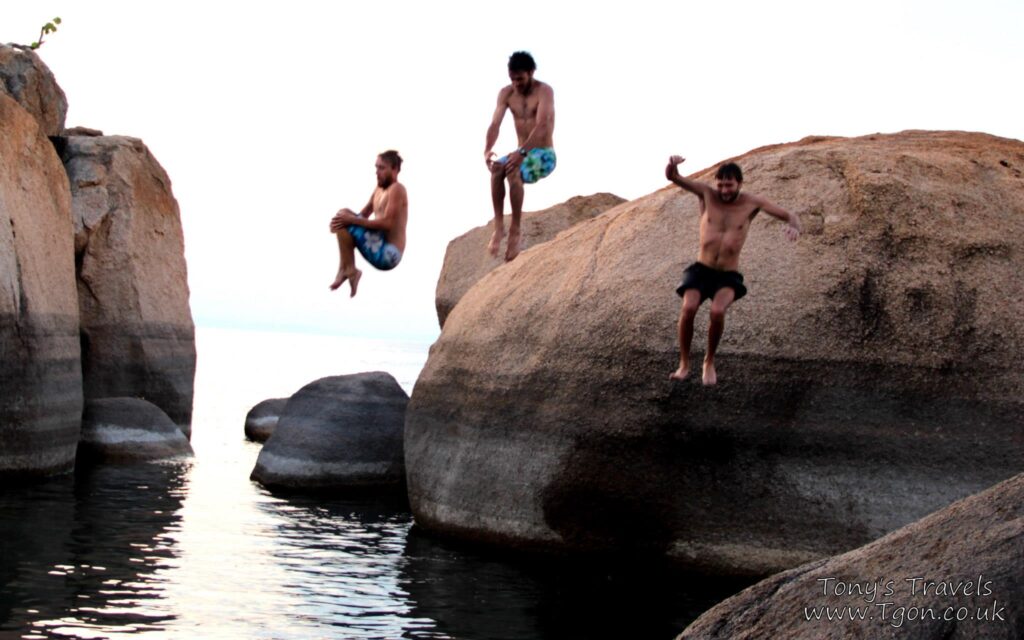
Mozambique
Mozambique had a strange start, I took a 25 hour bus ride from Tete to the capital city, Maputo. I didn’t even have a seat on the bus (Click to read original Blog post). I spend Christmas and New Year in Tofo on the coast of Mozambique, it was a really nice place but, due to the time of year, it was unbelievably busy and expensive. I met a really nice group of people through my CouchSurfing host, Thiago. We actually appeared as extras in a music video. From Maputo I took local transport over the border into Swaziland.
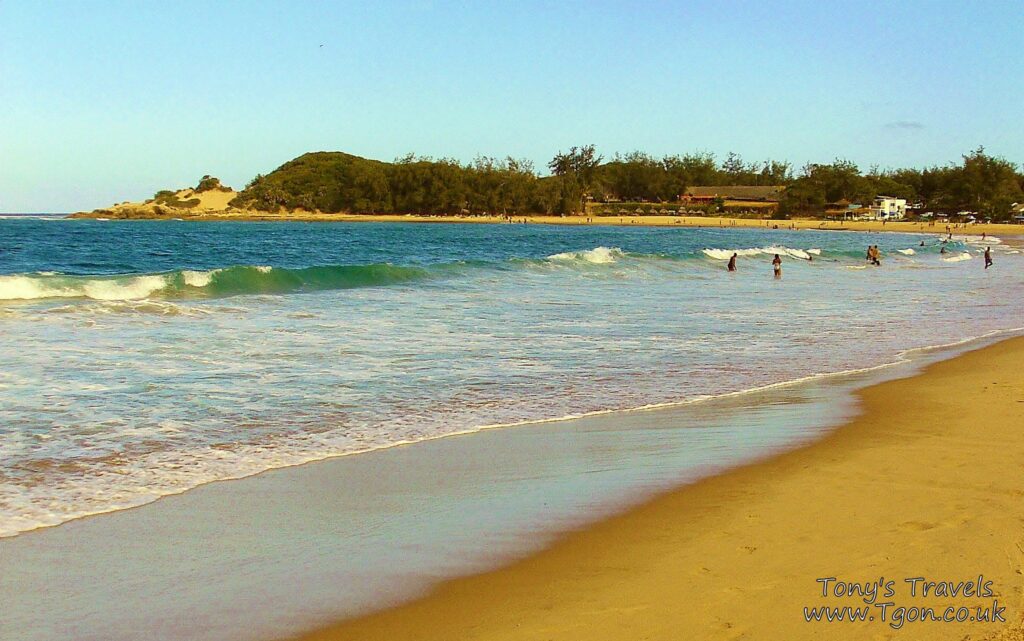
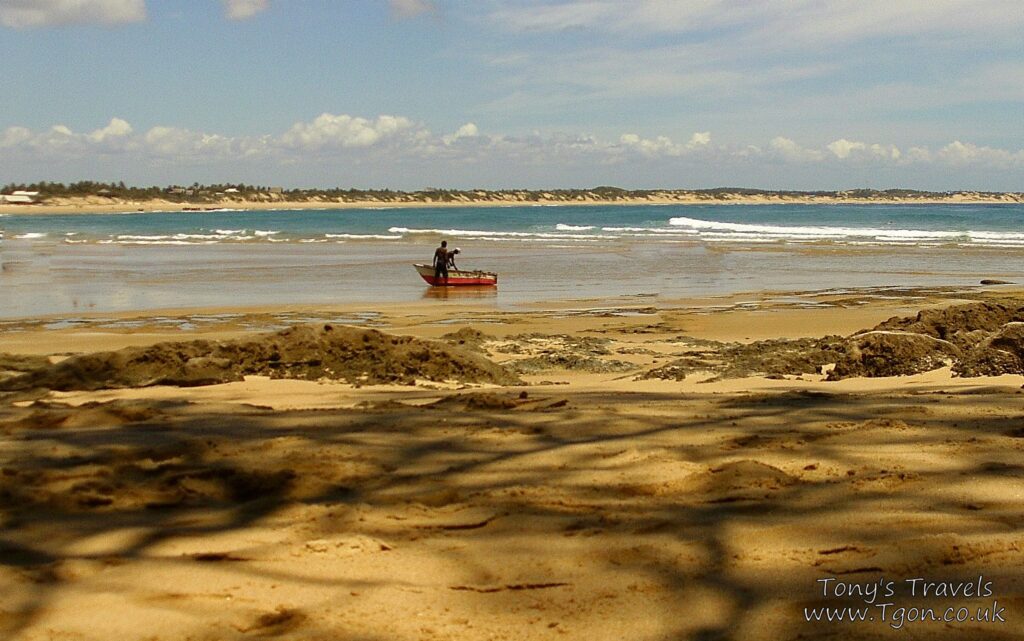
Swaziland
I really liked Swaziland, I met up with Nofar in a backpackers hostel inside a safari park. The park was great, you can hike through the park with the animals, and in the morning a family of warthogs kept coming onto the lawn of the hostel. It was a great time of year to be there, huge swarms of butterflies flying around the valley. Swaziland is a very small country so after a few days we drove south into South Africa.
South Africa
Once we were in South Africa we separated as I headed to Sodwana Bay to do my Advanced PADI Open Water course, while Nofar and her friend headed along the coast towards Cape Town. The diving in Sodwana bay was amazing, plus we got to swim with dolphins a couple of times as we were heading out to the dive spot. I also had a close encounter with a Mozambican spitting cobra (Click to read original Blog post). From Sodwana Bay I headed through Durban and Coffee Bay to a really nice hostel on the Garden Route, and from there to Cape Town. I stuck around in the city for a week or so, spending most of my time with a new friend I met through CouchSurfing. Jedrik has been travelling for several years and has been all around the world, it was great to chill out in the very westernised city of Cape Town after so long in the ‘real Africa’ further to the north. After 14 months in Africa, I was very sad to leave, but I was also quite excited about getting to a new country and meeting new people.
Click here to read how my trip continues into Australia
Other useful links:
Good Luck…Hope to meet you somewhere on the road. Leaving UK Dec 4th …boat to Santander…ferry to Tangier and head south on a little Serow….” Don’t go too fast….but I go pretty far!”…..
This is right along the lines of what I am planning. Saw your post about the CDP. The cost of it is just bullshit. I am foregoing the carnet seeing how it goes. Where there is a will there is generally a way.
Hope to run into on the road.